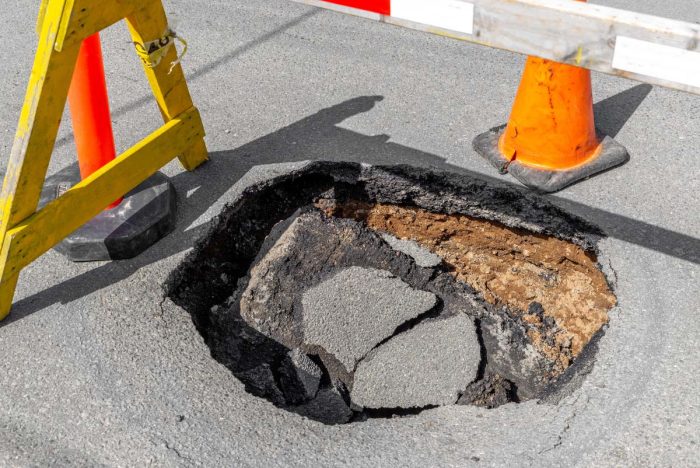
“Open and Obvious” Conditions after Kandil-ElSayed v F & E Oil, Inc.
In a watershed decision, the Michigan Supreme Court recently abrogated the “open-and-obvious defense” in premises liability actions. Kandil-El Sayed v. F & E Oil, Inc, 162907 & 163430, 2023 WL 4845611 (Mich. July 28, 2023)(the “Decision”). Unfortunately for landowners and possessors, the Court did not shy away from the intended effect of its decision – to shift “open-and-obvious” considerations from the legal issue of duty to the fact-based breach element. Id. at 42. This decision is expected to drastically reduce the number of premises liability actions that are dismissed at the dispositive motion stage.
Before this Decision, the MSC had held that, absent some special aspect that would leave the condition unreasonably dangerous, no legal duty was owed to protect invitees from open and obvious conditions, such as a parking lot pothole[1]. Lugo v. Ameritech Corp, Inc, 464 Mich 512, 517-18 (2001). In Lugo, a parking lot pothole was held to be an open-and-obvious hazard for which no duty was owed. Id. at 521. Decision at 9-10.
The Claims
The Decision involved rulings on appeals in two separate cases. The first case, Kandil-ElSayed v. F & E Oil, Inc (Docket No. 162907), involved a gas station customer, who slipped and fell on ice and/or snow near the station entrance. Though visible, the plaintiff argued that the condition was effectively unavoidable since it blocked the only entrance. Decision at pp. 2-4. The second case, Pinsky v. Kroger Co of Mich (Docket No. 163430) involved a supermarket customer who tripped over a cable suspending a “closed” sign across a checkout aisle. Decision at pp. 5-7. In lower court decisions,the defendants in both matters successfully invoked the open-and-obvious defense barring plaintiffs from proving duty. Decision at pp. 2-7.
The Kandil-El Sayed Court reversed, finding issues of fact as to the element of breach. In doing so, the Court explicitly overruled the prior caselaw where the open and obvious defense acted as a bar to the duty element of a claim. Decision at p. 39. The Court reasoned that Michigan’s comparative fault statutes, [MCL 600.2957(1), MCL 600.2958 and MCL 600.2959] represented legislative action assigning all decisions allocating fault to the jury. Decision at p. 21. Then, the Court concluded that in the aftermath of Lugo, trial courts often engaged in the weighing of fault when commenting on a plaintiff’s inattentiveness, thus violating the comparative fault statutes. Decision at pp. 31-33.
Dispositive Arguments Still Available
Fortunately, the Court left the door open to use evidence of the open and obvious nature of a condition to demonstrate whether a condition was “dangerous.” Specifically, the Court rejected the Third Restatement’s approach to premises liability in favor of the more defense-friendly Second Restatement. Here, the Second Restatement is compared side-by-side with the Third Statement’s equivalent (all emphasis added):
Second Restatement § 343
(Remains Good Law)
A possessor of land is subject to liability for physical harm caused to his invitees by a condition of the land if, but only if, he:
(a) Knows or by the exercise of reasonable care would discover the condition and should realize that it involves an unreasonable risk of harm to such invitees and
(b) Should expect that they will not discover or realize the danger or will fail to protect themselves against it, and
(c) Fails to exercise reasonable care to protect them against the danger.
Third
Restatement § 51
Subject to § 52 a land possessor owes a duty of reasonable care to entrants on the land with regard to:
(a) Conduct by the land possessor that creates risks to entrants on the land;
(b) Artificial conditions on the land that pose risks to entrants on the land;
(c) Natural conditions on the land that pose risks to entrants on the land; and
(d) Other risks to entrants on the land when any of the affirmative duties provided in Chapter 7 is applicable.
Adoption of the Third Restatement would have been difficult for property owners and possessors, as there is no threshold. Any “risk,” however removed, could be actionable. Despite shifting the “open and obvious” analysis from duty to the issue of breach, the Decision held that a land possessor owed a duty to “exercise reasonable care to protect [them] from unreasonable risk of harm caused by a dangerous condition of the land.” Decision at p. 39; discussing Williams, 429 Mich at 499 (emphasis added). Although at odds with the rest of the decision, this suggests that “open and obvious” considerations may still be relevant to duty, since a hidden hazard is typically the more dangerous.
This Decision certainly shifts the defense strategies available to landowners or possessors when faced with a premises liability suit. An important consequence of this Decision is that landowners and possessors should re-assess the types of preventative measures that they take to prevent liability. It is no longer sufficient to rely upon the open and obvious nature of a condition as a complete liability shield. Should you have further questions, we are available to discuss with you.
[1] Premises-liability is negligence-based, requiring the elements of (1) duty (2) breach, (3) causation and (4) damages. Benton v Dart Properties, Inc, 270 Mich App 437, 440 (2006)
